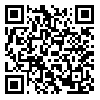Volume 16, Issue 2 (8 2003)
J Dent Med-tums 2003, 16(2): 53-58 |
Back to browse issues page
Download citation:
BibTeX | RIS | EndNote | Medlars | ProCite | Reference Manager | RefWorks
Send citation to:



BibTeX | RIS | EndNote | Medlars | ProCite | Reference Manager | RefWorks
Send citation to:
Talebi V, Mahmood Hashemi H, Gahani Hashemi H. An investigation to determine the validity of Tanaka-Johnston method for estimating the mesiodistal width of permanent canine and premolars in sample population of Ghazvin city.. J Dent Med-tums 2003; 16 (2) :53-58
URL: http://jdm.tums.ac.ir/article-1-418-en.html
URL: http://jdm.tums.ac.ir/article-1-418-en.html
Abstract: (5737 Views)
Statement of Problem: One of the easiest and most practical methods to predict the size of permanent canines and premolars, is of Tanaka-Johnston, but their research has been only performed on white skin North Europeans and it should be noted that the size of teeth, in various races, differ from each other.
Purpose: The aim of this study was to determine the validity of Tanaka-Johnston method, in a sample population taken from Ghazvin city.
Materials and Methods: The numbers of 235 pairs of study casts, prepared before any kind of treatment, were selected. The size of lower permanent incisors and permanent canines and premolars of both arches were measured. To analyze the results, "regression analysis" and "t test" were used.
Results: Based on the findings obtained from this study, new prediction equations as Y=12.9+0.4(X) and Y=]0.6+0.5(X) were presented for maxilla and mandible, respectively. However, these equations did not differ from Tanaka-Johnston equations statistically.
Conclusion: Tanaka- Johnston equations can be acceptably applied for the sample population taken from Ghazvin city, if the predictions are not overestimated.
Purpose: The aim of this study was to determine the validity of Tanaka-Johnston method, in a sample population taken from Ghazvin city.
Materials and Methods: The numbers of 235 pairs of study casts, prepared before any kind of treatment, were selected. The size of lower permanent incisors and permanent canines and premolars of both arches were measured. To analyze the results, "regression analysis" and "t test" were used.
Results: Based on the findings obtained from this study, new prediction equations as Y=12.9+0.4(X) and Y=]0.6+0.5(X) were presented for maxilla and mandible, respectively. However, these equations did not differ from Tanaka-Johnston equations statistically.
Conclusion: Tanaka- Johnston equations can be acceptably applied for the sample population taken from Ghazvin city, if the predictions are not overestimated.
| Rights and Permissions | |
 |
This work is licensed under a Creative Commons Attribution-NonCommercial 4.0 International License. |




